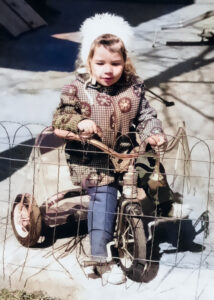All roads lead to Rome, now a figurative expression, was once quite literal. Beginning around 300 BC, the Roman Empire started constructing a vast network of roads radiating from the great city. During the height of Rome’s reign, there were over 250,000 miles of roads connecting the city to the outreaches of the empire throughout Europe and as far away as western Asia. The Roman roads intertwined throughout the land, forming a web that carried everyday citizens, the military, and political officials to outlying regions, and served as trade routes for the exchange of goods, knowledge, culture, and language.
With the collapse of the Roman Empire, Europe and much of the world fell into a period of stagnation, known as the Dark Ages. Exploration, scientific discovery, and economics fell into decline, as did cultural, artistic, and intellectual achievements. The darkest of this dark period was the Bubonic plague, the global pandemic originating in Asia that entered Europe through shipping ports in Italy. Ravaging Western Eurasia and North Africa, the Bubonic Plaque caused an estimated 75-200 million deaths, wiping out a third of the population between the years 1346 and 1352.
From this darkness, there emerged a great light, a revival of art, literature, language, science, and exploration. This new age, known as the Renaissance, was ushered in by a scholar and poet from a village near Florence, Italy, Francesco Petrarca, more commonly known by his anglicized name, Petrarch. One of the most influential figures during the Renaissance, and one of the greatest artists of all time, was another Florentine, Michelangelo di Lodovico Buonarroti Simoni, or more simply, Michelangelo!
Most famous for his frescoes on the Sistine Chapel’s ceiling, Michelangelo was also a great sculptor and the creator of the Pietá, depicting the death of Christ, and the statue of David, now residing in Galleria dell’Accademia in Florence, Italy. A beloved symbol of Florence, the marble masterpiece is also an icon of the Renaissance. Standing 17 feet tall, it took Michelangelo over 3 years, beginning in 1501, to carve the image of the nude teenage male figure, intended to embody the independent spirit of the Republic of Florence.
Suddenly, in 2023 in America, this great work of one of the world’s most brilliant and revered artists is being labeled as pornography. The Statue of David, as viewed through the eyes of ignorance, is seen as porn, unsuitable for the eyes of children in middle school. The cries of outraged parents resulted in the firing of a school principal, who allowed an art teacher to give a 6th grade class a lesson on Renaissance art, featuring Michelangelo’s David. Read more



